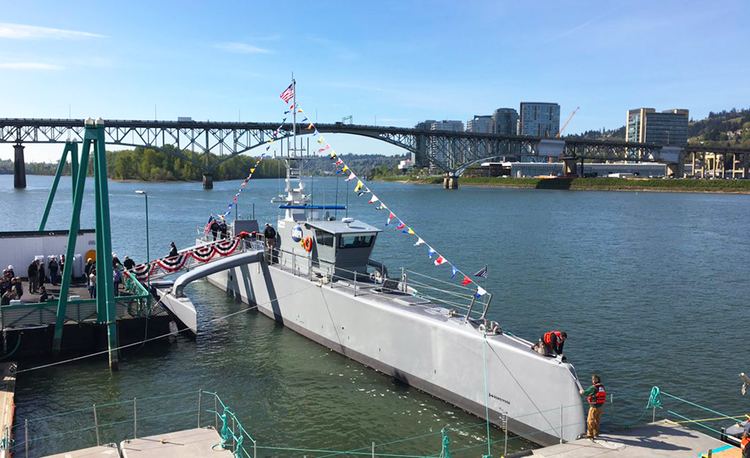Name Sea Hunter Status Sea trials Length 40 m Range 18.52 million m | Acquired April 2016 Launched 2016 Builder Vigor Industrial LLC | |
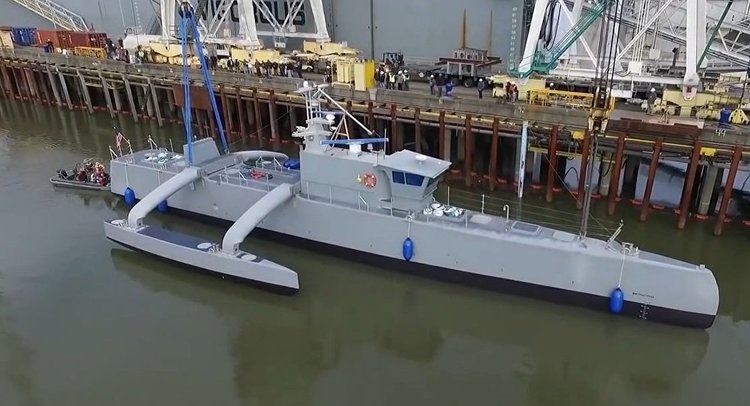 | ||
Displacement 135 tons (standard)145 tons (full load) | ||
Anti submarine warfare continuous trail unmanned vessel actuv sea hunter us navy new type vessel
The Sea Hunter is an autonomous unmanned surface vehicle (USV) launched in 2016 as part of the DARPA Anti-Submarine Warfare Continuous Trail Unmanned Vessel (ACTUV) program. It was christened 7 April 2016 in Portland, Oregon. It was built by Vigor Industrial. The vessel continues the line of experimental "Sea" ships, including the Sea Shadow, Sea Fighter, and Sea Slice.
Contents
- Anti submarine warfare continuous trail unmanned vessel actuv sea hunter us navy new type vessel
- Darpa s sea hunter submarine hunting drone warship actuv
- Description
- Sea trials
- References
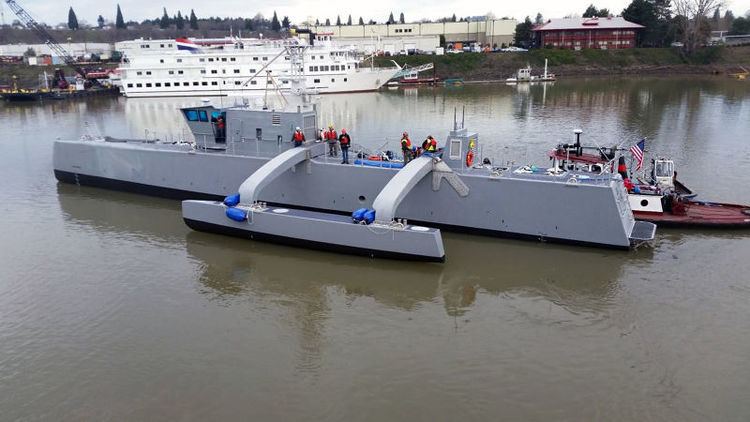
Darpa s sea hunter submarine hunting drone warship actuv
Description
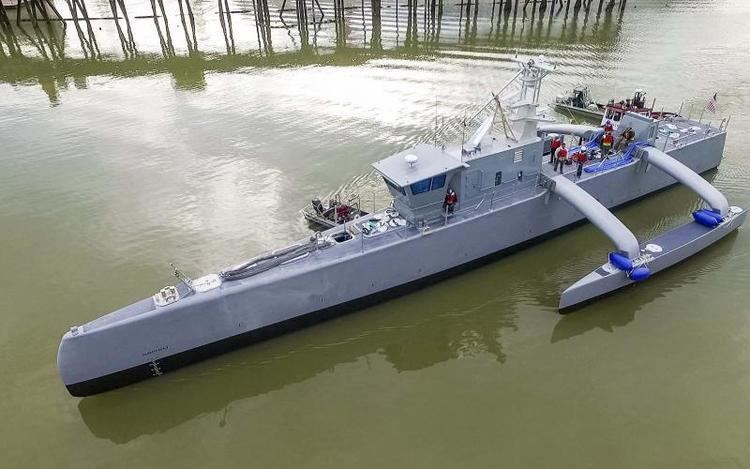
The initially unarmed prototype, built at a cost of twenty million dollars, is a 132-foot (40 meter)-long trimaran (a central hull with two outriggers). It is an unmanned self-piloting craft with twin screws, powered by two diesel engines with a top speed of 27 knots (31 mph; 50 km/h). Its weight is 135 tons, including 40 tons of fuel, adequate for a 70-day cruise. Cruising range is "transoceanic," 10,000 nautical miles (12,000 mi; 19,000 km) at 12 knots (14 mph; 22 km/h) fully fueled with 14,000 gallons of gas, enough to "go from San Diego to Guam and back to Pearl Harbor on a tank of gas." Sea Hunter has a full load displacement of 145 tons and is intended to be operational through Sea State 5, waves up to 6.5 ft (2.0 m) high and winds up to 21 knots (24 mph; 39 km/h), and survivable through Sea State 7, seas up to 20 ft (6.1 m) high.
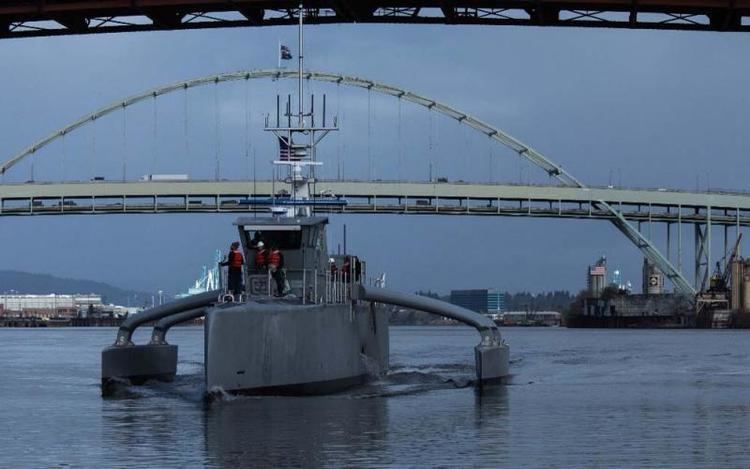
A removable operator control station is installed during the testing period "for safety and backup" until it can be determined to reliably operate on its own. Operationally, computers will drive and control the ship, with a human always observing and taking charge if necessary in a concept called Sparse Supervisory Control, meaning a person is in control, but not "joy sticking" the vessel around. It can patrol without human guidance, using optical guidance and radar to avoid hitting obstacles or other watercraft. The ship has a host of non-standard features because of its lack of crew, including an internal layout that offers enough room for maintenance to be performed but not for any people to be permanently present.
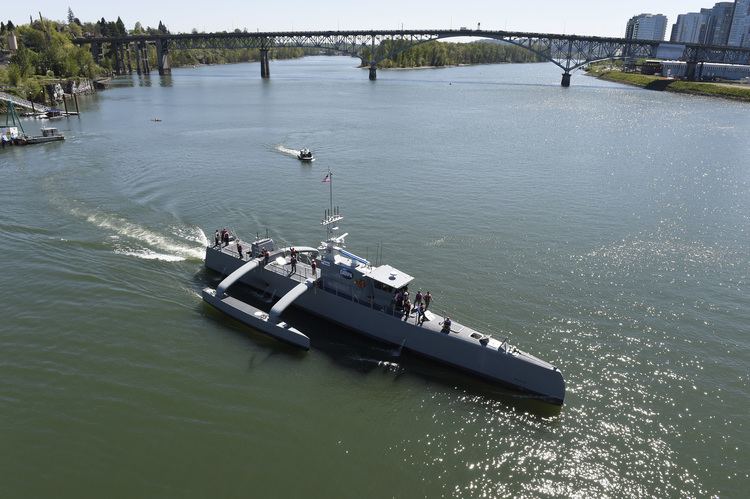
It is expected to undergo two years of testing before being placed in service with the U.S. Navy. If tests are successful, future such craft may be armed and used for anti-submarine and counter-mine duties, operating at a small fraction of the cost of operating a destroyer, $15,000-$20,000 per day compared to $700,000 per day; it could operate with Littoral Combat Ships, becoming an extension of the LCS ASW module. Deputy US Defense Secretary Robert Work said that if weapons are added to the ship, a human would always remotely make the decision to use lethal force.
Sea trials
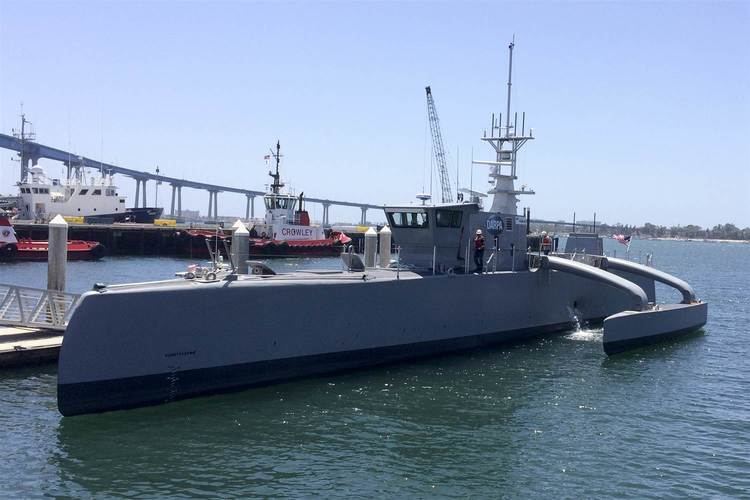
On 22 June 2016, Sea Hunter completed initial performance trials, meeting or surpassing all performance objectives for speed, maneuverability, stability, seakeeping, acceleration/deceleration, fuel consumption, and mechanical systems reliability in the open-ocean. Upcoming trials will include testing of sensors, the vessel's autonomy suite, compliance with maritime collision regulations, and proof-of-concept demonstrations for a variety of U.S. Navy missions.
